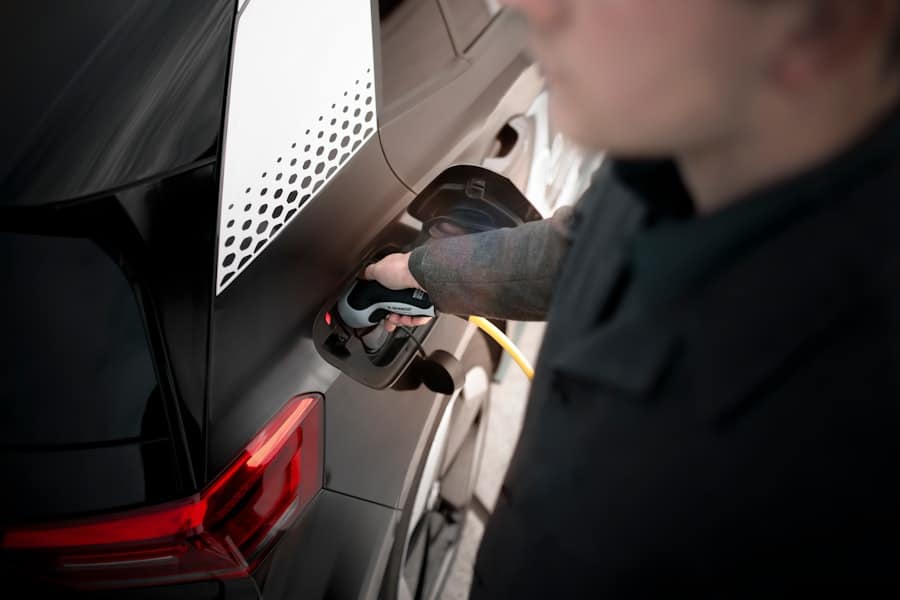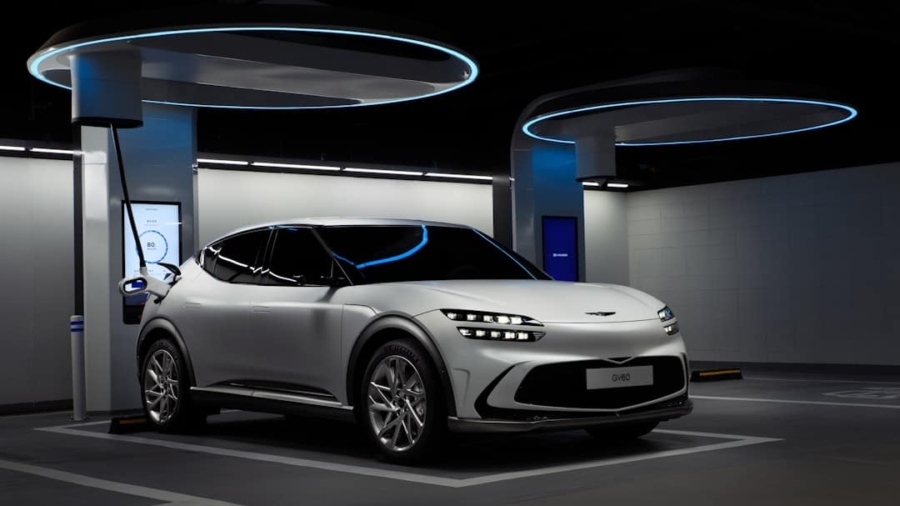The automotive industry is undergoing a transformative shift, with electric vehicles (EVs) emerging as a dominant force in the market. This rise can be attributed to a confluence of factors, including technological advancements, changing consumer preferences, and heightened awareness of environmental issues. In recent years, major automotive manufacturers have pivoted their strategies to prioritize electric mobility, leading to an influx of new models and innovations.
The global push for sustainability and the reduction of greenhouse gas emissions has further accelerated this trend, as governments and organizations worldwide recognize the urgent need to transition away from fossil fuels. The surge in electric vehicle adoption is also fueled by the growing availability of diverse models that cater to various consumer needs. From compact cars to SUVs and luxury sedans, manufacturers are expanding their electric offerings to appeal to a broader audience.
This diversification is essential in dispelling the notion that EVs are limited in style or functionality. As more consumers experience the benefits of electric driving—such as lower operating costs, reduced maintenance, and a quieter ride—the demand for these vehicles continues to rise. The combination of innovative designs and practical advantages positions electric vehicles as not just an alternative but a preferred choice for many drivers.
Key Takeaways
- Electric vehicles are gaining popularity due to their environmental benefits and technological advancements.
- Battery technology is rapidly improving, leading to increased energy density and longer driving ranges for electric vehicles.
- The development of charging infrastructure is crucial for the widespread adoption of electric vehicles.
- Autonomous driving features are being integrated into electric vehicles, revolutionizing the way we commute.
- Electric vehicles have a positive impact on the environment and contribute to sustainability efforts.
Advancements in Battery Technology
At the heart of the electric vehicle revolution lies significant progress in battery technology. The development of lithium-ion batteries has been pivotal, offering higher energy densities, longer lifespans, and faster charging capabilities compared to earlier battery types. Researchers and engineers are continuously exploring new materials and chemistries to enhance battery performance further.
For instance, solid-state batteries, which utilize a solid electrolyte instead of a liquid one, promise to deliver even greater energy density and safety. These advancements could potentially lead to electric vehicles with longer ranges and shorter charging times, addressing two of the most significant barriers to widespread adoption. Moreover, the focus on sustainability has prompted innovations in battery recycling and second-life applications.
As the number of electric vehicles on the road increases, so does the need for responsible battery disposal and recycling methods. Companies are investing in technologies that allow for the recovery of valuable materials from used batteries, reducing the environmental impact associated with mining new resources. Additionally, repurposing used EV batteries for energy storage solutions in homes or businesses is gaining traction, providing a dual benefit: extending the life of the batteries while contributing to renewable energy integration.
Increased Range and Charging Infrastructure

One of the most critical factors influencing consumer acceptance of electric vehicles is range anxiety—the fear that a vehicle will run out of power before reaching its destination. However, advancements in battery technology have significantly increased the range of modern electric vehicles, with many models now capable of traveling over 300 miles on a single charge. This improvement has alleviated concerns for many potential buyers, making EVs a more viable option for long-distance travel.
Governments and private companies are investing heavily in building out charging networks, including fast-charging stations that can replenish an EV’s battery in as little as 30 minutes. This infrastructure development is essential not only for urban areas but also for rural regions where charging options have historically been limited.
The establishment of widespread charging stations enhances consumer confidence and convenience, making it easier for drivers to transition to electric mobility without worrying about access to charging facilities.
Integration of Autonomous Driving Features
The integration of autonomous driving features into electric vehicles represents another significant trend shaping the future of transportation. Many electric vehicle manufacturers are at the forefront of developing advanced driver-assistance systems (ADAS) that enhance safety and convenience. Features such as adaptive cruise control, lane-keeping assistance, and automated parking are becoming standard in many new EV models.
These technologies not only improve the driving experience but also contribute to reducing accidents caused by human error. Furthermore, the synergy between electric vehicles and autonomous driving technology is particularly promising. Electric vehicles are often equipped with sophisticated sensors and computing power necessary for autonomous operation.
As manufacturers continue to refine their self-driving algorithms, the potential for fully autonomous electric vehicles becomes increasingly feasible. This convergence could revolutionize urban mobility by enabling shared autonomous fleets that reduce traffic congestion and lower emissions while providing efficient transportation options for city dwellers.
Impact on the Environment and Sustainability
The environmental impact of electric vehicles is a central theme in discussions about their adoption.
This reduction is particularly important given the growing concerns about public health linked to poor air quality.
Studies have shown that transitioning to electric vehicles can lead to substantial decreases in harmful pollutants such as nitrogen oxides and particulate matter, contributing to cleaner air and improved health outcomes for communities. However, it is essential to consider the entire lifecycle of electric vehicles when evaluating their environmental impact. While EVs produce fewer emissions during operation, the production process—particularly battery manufacturing—can be resource-intensive and environmentally damaging if not managed responsibly.
The extraction of lithium, cobalt, and nickel used in batteries raises concerns about ecological degradation and human rights violations in mining regions. Therefore, sustainable practices in sourcing materials and recycling batteries are critical components of ensuring that electric vehicles contribute positively to environmental sustainability.
Consumer Adoption and Market Trends

Changing Perceptions and Growing Acceptance
The perception of electric vehicles has undergone a significant shift, transitioning from niche products to mainstream options that offer comparable performance and features to traditional gasoline-powered cars. This growing acceptance is reflected in market trends, with major automotive manufacturers committing substantial resources to develop new electric models and phase out internal combustion engines altogether.
Industry Priorities and New Players
Several automakers have announced plans to transition their entire fleets to electric by specific target dates, signaling a clear shift in industry priorities. Furthermore, the emergence of new players in the EV market, such as startups focused solely on electric mobility, has intensified competition and innovation within the sector.
A New Era in the Automotive Industry
As the electric vehicle market continues to evolve, it is clear that the automotive industry is on the cusp of a significant transformation. With growing consumer demand, increasing investment from manufacturers, and innovative new players entering the market, the future of electric vehicles looks bright.
Collaboration and Competition Among Auto Manufacturers
The landscape of the automotive industry is characterized by both collaboration and competition among manufacturers as they navigate the transition to electric mobility. Traditional automakers are increasingly partnering with technology companies to leverage expertise in software development, battery technology, and autonomous driving systems. These collaborations enable established manufacturers to accelerate their EV initiatives while benefiting from the agility and innovation often found in tech startups.
At the same time, competition remains fierce as companies vie for market share in the rapidly evolving electric vehicle sector. Established brands are racing to introduce new models that meet consumer demands while also investing heavily in research and development to stay ahead of technological advancements. This competitive environment fosters innovation but also raises questions about market saturation and consumer choice as more options become available.
Government Policies and Incentives
Government policies play a crucial role in shaping the future of electric vehicles through incentives designed to encourage adoption and investment in infrastructure. Many countries offer tax credits, rebates, or grants for consumers who purchase electric vehicles, effectively lowering the upfront cost and making them more accessible to a broader audience. Additionally, some regions have implemented stricter emissions regulations that incentivize manufacturers to develop cleaner technologies.
Beyond consumer incentives, governments are also investing in charging infrastructure development as part of broader sustainability initiatives. Public funding for charging stations helps alleviate range anxiety while promoting the use of electric vehicles as a viable alternative to traditional transportation methods. Furthermore, international agreements aimed at reducing carbon emissions are pushing nations toward ambitious targets for EV adoption, creating a supportive regulatory environment that fosters growth in this sector.
The interplay between government policies and market dynamics will continue to shape the trajectory of electric vehicle adoption in the coming years. As consumers become more environmentally conscious and technology continues to advance, it is likely that electric vehicles will play an increasingly central role in global transportation systems.
In a recent article by CNET, the latest consumer technology breakthroughs were highlighted, including advancements in electric vehicles. This aligns with the discussion on Electric Vehicles in 2025: What the Auto Industry Got Right, as it showcases the ongoing innovation and progress in the industry. The article provides valuable insights into the cutting-edge technologies shaping the future of electric vehicles and the auto industry as a whole.
FAQs
What are electric vehicles (EVs)?
Electric vehicles (EVs) are automobiles that are powered by electric motors and batteries, rather than traditional internal combustion engines.
What is the current state of the electric vehicle industry?
The electric vehicle industry is rapidly growing, with many major automakers investing heavily in the development and production of electric vehicles. There is also a growing infrastructure of charging stations to support the increasing number of EVs on the road.
What are some of the benefits of electric vehicles?
Electric vehicles offer several benefits, including lower emissions, reduced reliance on fossil fuels, and lower operating costs due to the lower cost of electricity compared to gasoline.
What did the auto industry get right about electric vehicles in 2025?
The auto industry successfully predicted the increasing demand for electric vehicles and invested in the development of new EV models. They also correctly anticipated the need for a more robust charging infrastructure to support the growing number of electric vehicles on the road.
What are some challenges facing the electric vehicle industry?
Challenges facing the electric vehicle industry include the need for continued advancements in battery technology to improve range and charging times, as well as the need for more affordable EV options to make them accessible to a wider range of consumers.

